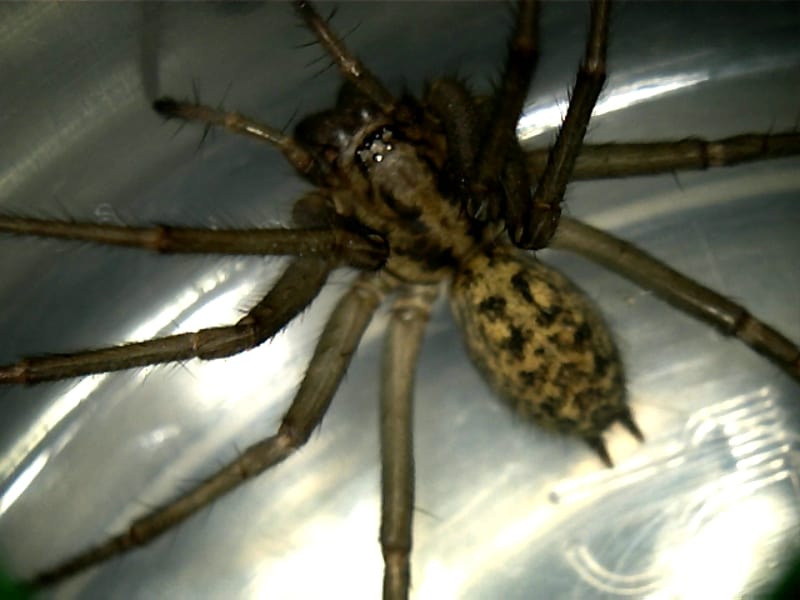
Photographer: Julien Lino-Wiseman
CC License: https://bit.ly/1p2b8Ke
Hobo Spider Facts
- Firstly, the impressive Hobo Spider is a member of the remarkable genus known as funnel web spiders. This term, quite naturally, derives from the specific nature of its usual constructions.
- That occurs due to the fact that it typically builds funnel-shaped structures of silk to trap its prey. The resourceful spider waits patiently at the small end for the prey to become trapped.
- In addition, the species does not generally act aggressively unless directly threatened. Also, individuals commonly construct their funnel webs near or even in human homes, or other buildings.
- Finally, the arachnid was introduced into the Pacific Northwest area of the United States sometime prior to the 1930’s. Authorities presume this occurred accidentally via agricultural shipments.
Related Articles
Ladybird Spider Trogloraptor Black Widow
Photographer: Arno Meintjes
CC License: https://bit.ly/1iowB8m
Hobo Spider Physical Description
Most notably, individuals of the Hobo Spider vary quite significantly in appearance, especially in color and size. Specific identification, therefore, often depends on direct observation of the anatomical structure.
But, certain traits remain reasonably consistent among individuals. Body length ranges from 0.28 – 0.55 in (7 – 14 mm). The span of the legs, however, often equals slightly more than twice that.
In addition, the species displays only a slight degree of sexual dimorphism. In this species, the abdomen of the female typically grows slightly larger than that of the male. Finally, the coloring consists of varied shades of brown.
- Kingdom: Animalia
- Phylum: Arthropoda
- Class: Arachnida
- Order: Araneae
- Family: Agelendiae
- Genus: Eratigena
- Species: E. agrestis
Hobo Spider Distribution, Habitat, and Ecology
The Hobo Spider actually represents a rather surprising species, in some ways. That’s because it has quite a wide distribution range for an arachnid. That range covers most of Europe, and also extends through parts of Asia.
In addition, human activities have inadvertently spread the species to several other parts of the globe as well. This new habitat range now includes both Canada and the United States, in North America.
Furthermore, in all part of its range, it almost always occurs in open fields. There, it most commonly builds its web under large rocks or fallen logs. However, it has been seen in buildings on occasion, though this remains rare.
Finally, the bite of the Hobo Spider does not usually prove to be fatal to a healthy adult human. But, the effects of envenomings, including necrosis, appear to be similar to those of the brown recluse spider.
Species Sharing Its Range
Scottish Wildcat Carolina Silverbell Golden Pheasant
Check out our other articles on 9 Bewildering African Plants, Giant Oarfish, Lagoa do Fogo, Lewton’s Milkwort, Bald Uakari, Giant Katydid, Vietnamese Mossy Frog

